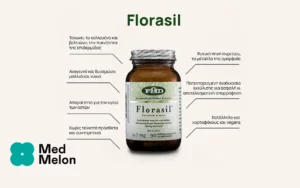Scientific Names of Wheat Germ Oil: Triticum aestivum Linnι, [Fam. Poaceae]
Forms:
Oil, expeller-pressed in the absence of light, heat and oxygen
Traditional Usage:
– Athletic Endurance
– Brain Health
– Essential Fatty Acid Deficiency (omega-6)
– Cellular Regeneration
– Cleansing
– Detoxification
– Diverticulosis
– Irritable Bowel Syndrome
– Lowering LDL Cholesterol
– Nutritive
– Ulcers, Prevention
– Vitamin E Deficiency
Overview:
Wheat, Triticum aestivum Linnι., was one of the first of the grains domesticated by humans with cultivation starting in the Neolithic period. Bread wheat was grown in the Nile valley by 5000 B.C., in China by 2500 B.C. and England by 2000 B.C. Wheat germ oil, which makes up only 7-12% of the seed, is an excellent source of natural Vitamin E and tocopherols, the richest known source in nature. Organic cold-pressed wheat germ oil is a deep orange color, rich in beta carotene, and has a full balance of mixed tocopherols from which Vitamin E is derived (without synthetic compounds). Gamma, Beta, and d-Alpha tocopherols are all present in the oil making the Vitamin E much more bioavailable than synthetic sources that are cheaper but provide fewer health benefits. Gamma tocopherols are free radical scavengers that give wheat germ oil its potent antioxidant qualities. One tablespoon of wheat germ oil provides 65 IU of Vitamin E, twice the U.S. Recommended Dietary Allowance (RDA). Animal studies show that intake of wheat germ oil results in a rapid increase in the content of vitamin E in the brain, liver, heart, lungs, kidneys, and spleen and gives powerful antioxidant protection to these organs and tissues. It has a nutty fresh flavour and is also rich in octacosanol, a potent source of energy prized by athletes. Octacosanols help athletes to increase endurance and lower oxygen depletion and are helpful in cholesterol management and neurological disorders. The oil also contains many phosphatides and phytosterols that assist in the digestion of fats. It is very important to use only expeller pressed wheat germ oil because studies show that unrefined wheat germ oil prevents ulcers, whereas refined one does not. The oil also prevents the formation of abnormal cells in the colon.
Active Ingredients:
Wheat Germ Oil contains: Vitamin E (ATE) 192.4mg/100g; Alpha Tocopherol 149.4mg/100g; Beta Tocopherol; Gamma Tocopherol; Beta Carotene; Mixed Carotenoids; Phytosterols 553mg/100g; Octacosanols. Fatty acids, total saturated fatty acids 18.8g/100g: 14_0=0.1g; 16_0=16.6g; 18_0=0.5g; Total monounsaturated fatty acids 15.1g/100g: 16_1=0.5g; 18_1=14.6g; Total polyunsaturated fatty acids 61.7g/100g: 18:2 =54.8g; 18_3=6.9g. (Information taken from The National Agriculture Library’s USDA Nutrient Database for Standard Reference at http://www.nal.usda.gov).
Suggested Amount:
It is recommended daily at a dosage of 1 tablespoon per 100 lbs. of body weight. It is best taken with meals. The oil, rich in omega-6 fatty acids but low in important omega-3 EFAs, should be taken as part of a balanced diet.
Drug Interactions:
None known
Contraindications:
Wheat germ oil is contraindicated in people who suffer from severe wheat allergy. Most of the allergenic compounds are present in the seed, germ or bran (with gluten being the most notable of these), but trace amounts may also be present in the unrefined oil.
Side Effects:
It can cause allergic reactions in susceptible persons.
References:
Erasmus, U. 1993: Fats that Heal, Fats that Kill. Published by Alive Books, Burnaby, B.C., Canada. pp. 1-456.
Jayaraj AP, Tovey FI, Clark CG, Hobsley M. 2001. Dietary factors in relation to the distribution of duodenal ulcer in India as assessed by studies in rats. J Gastroenterol Hepatol. 2001 May; 16(5): 501-5.
Paranich VA, Cherevko OI, Frolova NA, Paranich AV. 2000. The effect of wheat germ oil on the antioxidant system of animals. Lik Sprava. 2000 Mar; (2): 40-4. Ukrainian.
Reddy BS, Hirose Y, Cohen LA, Simi B, Cooma I, Rao CV. 2000. Preventive potential of wheat bran fractions against experimental colon carcinogenesis: implications for human colon cancer prevention. Res. 2000 Sep 1; 60(17): 4792-7.




